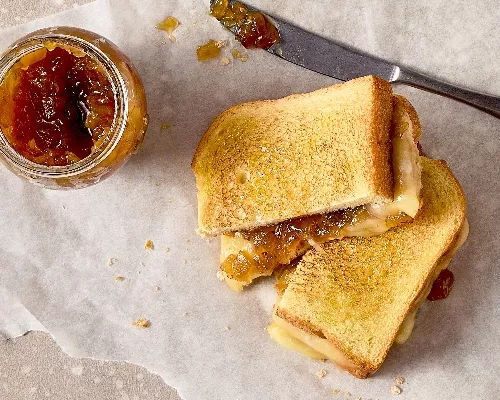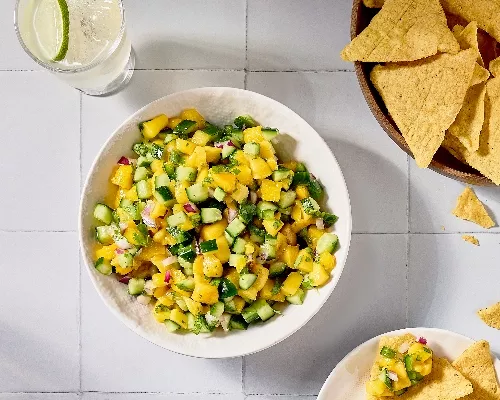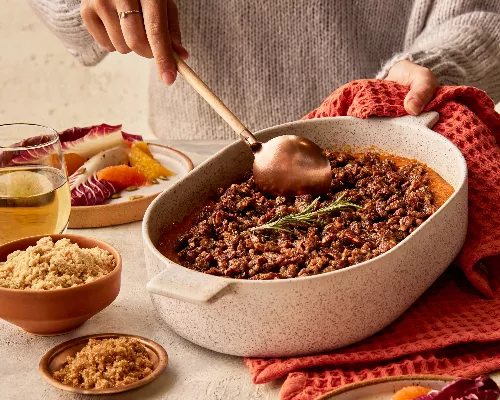Step 1
In a small saucepan set over medium heat, stir together the Redpath® Dark Brown Sugar, Dijon mustard, clementine juice, honey, soy sauce, rosemary, zest, minced garlic, and pepper. Bring to a boil, stirring to dissolve sugar. Lower heat and simmer until the glaze thickens slightly; about 3 minutes.
Step 2
Turn off the heat. Set aside.
Step 1
Bring the ham to room temperature (see chef’s tips). Preheat oven to 325°F (163°C).
Step 2
Place the ham cut side down, on a cutting board. Using a sharp knife, score the fat with a crisscross pattern, taking care not to cut into the meat.
Step 3
Place ham cut side down into a roasting pan. With a pastry brush, brush about a third of the glaze over the ham before placing in the oven. Cover and seal the roasting pan with foil.
Step 4
Cook covered in the oven for about an 1 hour or until the internal temperature of the ham is 100°F (38°C) at the thickest part. Remove the covered ham from oven. Increase oven temperature to 400°F (204°C). Once oven is preheated, brush some of the glaze onto the ham and place back into the oven, uncovered. Baste ham with the remaining glaze every 10 to 15 minutes or until the ham is 135°F (57°C) at the thickest part, and glaze is caramelized. Adding the ham glaze part way through cooking prevents it from burning.
Step 5
Remove ham from the oven, tent with foil (do not seal completely as this may lead to steaming the ham and overcooking it, and any caramelized bits will soften) and allow the ham to rest for 20 minutes before slicing and serving (see Chef’s Tips).
Step 6
Store any leftovers in an airtight container in the fridge for up to 4 days.

*Redpath® Golden Yellow or Demerara Style Sugar can be used in place of the Redpath® Dark Brown Sugar.
*Zest citrus fruit before juicing.
*Take ham out of the fridge an hour or so before preparing, to bring ham to room temperature. This will make it easier for the ham to cook evenly and come to the correct temperature without over-cooking.
*Depending on the size of the ham used, it will take approximately 10 to 15 minutes per pound for it to reach an internal temperature of 135°F (57°C). Any cooked meat should rest before cutting. During this resting period, the internal temperature for large cuts of meat can rise between 10 to 15 degrees. Ready-to-eat hams (city hams or smoked hams) are safe to eat at an internal temperature between 140 to 145°F (60 to 63°C).
*If a more crisp, caramelized crust is desired, remove ham from the oven when the internal temperature is 130°F (54°C). Preheat oven to broil. Glaze ham one final time, and place under the broiler for 3 to 5 minutes or until scored edges begin to crisp up and caramelize. Keep an eye on the glaze to ensure it doesn’t burn.
*When reheating leftovers, ham should be heated until the internal temperature is 165°F (74°C).
*Do not discard the bone. The bone is great for flavouring soup, stock, or beans.











